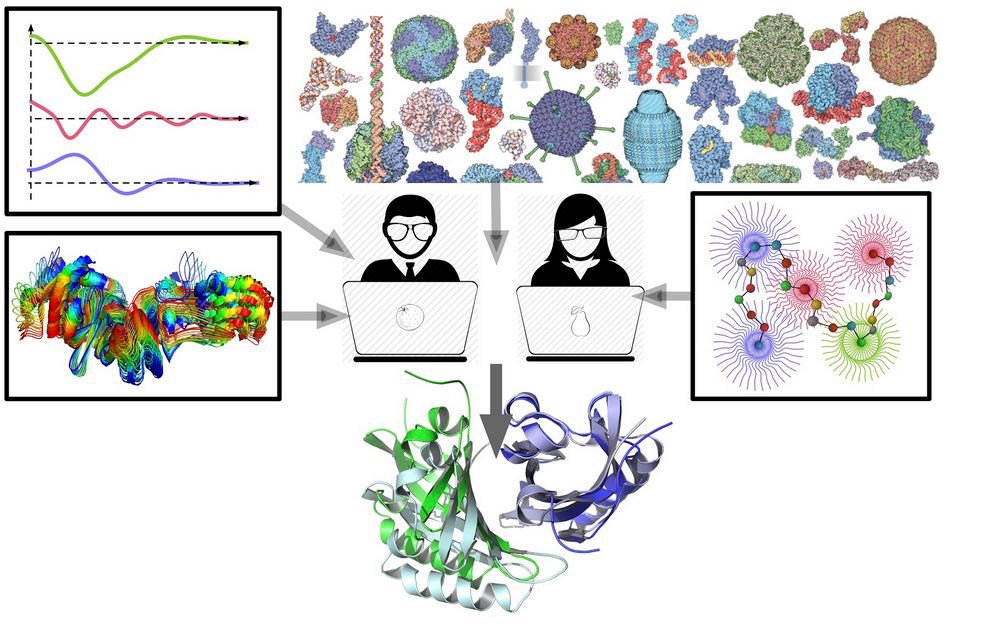Speaker
Description
Intrinsically disordered proteins (IDPs) are key in wide range of biological processes, from signal-transduction pathways to the protection of genomic integrity. Yet, their unstructure poses a significant challenge for understanding their function at the atomistic level. In our work we aim to decipher the role of the intrinsically disordered acidic domain of APLF (APLFAD) in binding and safeguarding histone proteins, the core protein component of chromatin, during DNA damage repair.
APLF is a scaffold protein for the DNA repair machinery and vital to maintenance of genomic integrity. APLF contains a disordered C-terminal acidic domain (APLFAD) that harbors histone chaperone activity, and deletions of this chaperone domain have been shown to impair cell survival after DNA damage [1]. We recently determined that this acidic domain can bind both H2A-H2B and H3-H4 complexes with similar affinity [2]. Moreover, we found that APLFAD can bind all histones simultaneously and can promote their deposition on DNA, challenging the current paradigm of of step-wise nucleosome assembly.
To understand the APLFAD-histone interaction at the structural level we collected a series of NMR, mass-spectrometry and SAXS data. Yet their integration into a representative atomistic ensemble is challenged by unstructured nature of APLFAD, the presence of disordered tails in the histones, the dynamic oligomeric nature of the histones in vitro as well as the size of the complex (120 kDa).
In the presentation I will discuss the information content of the experimental data, our approach in modelling the system using the docking software HADDOCK and the use of SANS data to get new insights in the architecture of the complex. Ultimately, the structure of the APLF-histone complex will give key new insights into the chaperone activity of APLF, in particular how it is able to prevent non-native DNA binding and how it controls histone stoichiometry in nucleosome (dis)assembly.
[1]. Mehrotra, P. V. et al. DNA repair factor APLF is a histone chaperone. Mol. Cell 41, 46–55 (2011). DOI: 10.1016/j.molcel.2010.12.008
[2]. Corbeski, I. et al. DNA repair factor APLF acts as a H2A-H2B histone chaperone through binding its DNA interaction

